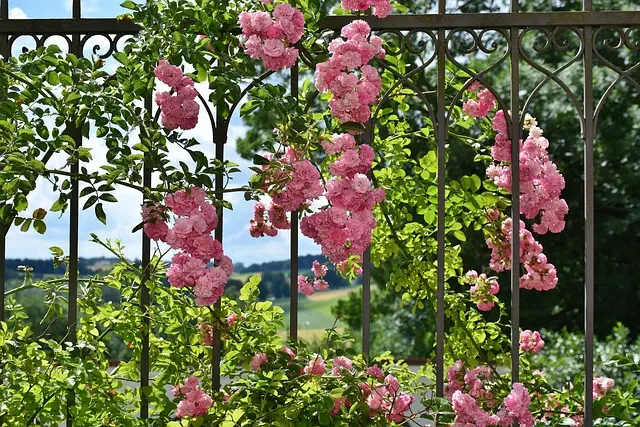Kratom trees (Mitragyna speciosa), towering evergreens native to Southeast Asia's rainforests, grow up to 30 feet tall with broad, palm-like leaves showcasing vibrant green foliage and unique yellow veining. These robust plants thrive in humid, rich soil environments, offering a distinctive appearance characterized by thick trunks, small thorns, arching branches adorned with white-pink flowers, and striking color variations from early bush stages to mature trees with broad crowns. The mature Kratom tree is recognized by its yellow vein patterns on leaves, earning it the term "Yellow Vein Kratom."
“Unraveling the mysteries of Yellow Vein Kratom Powder: A Comprehensive Guide. Delve into the enchanting world of Mitragyna speciosa, commonly known as the kratom tree, and discover its captivating appearance at various stages of growth. From its lush tropical habitat to the meticulous process of harvesting and powder production, we explore what sets this yellow variety apart. Learn about its distinct properties, compare it with other kratom powders, and gain crucial insights into safe and responsible use.”
- Origin and Appearance of Kratom Trees
- – Description and habitat of Mitragyna speciosa (Kratom tree)
- – Visual characteristics of the plant at different stages of growth
Origin and Appearance of Kratom Trees
Kratom trees, scientifically known as Mitragyna speciosa, are native to Southeast Asia, with specific origins in regions such as Thailand, Malaysia, and Indonesia. These trees play a significant role in traditional medicine practices across these cultures for centuries. The kratom tree is a robust, tropical plant that can grow up to 30 feet tall, featuring broad, palm-like leaves. Its distinctive appearance lies in the vibrant green color of its foliage, which carries a unique yellow veining pattern – a feature that gives rise to popular varieties like Yellow Vein Kratom Powder.
The tree’s trunk is usually thick and rough, adorned with small thorns along its branches. In the wild, kratom trees thrive in humid environments with rich soil, often found in dense rainforests. This natural habitat contributes to the plant’s robust health and diverse chemical composition, making it a valuable resource for both traditional medicine and modern research.
– Description and habitat of Mitragyna speciosa (Kratom tree)
The Kratom tree, scientifically known as Mitragyna speciosa, is a fascinating and distinctive plant native to Southeast Asia’s tropical rainforests. This evergreen tree typically grows up to 12-20 meters in height, with robust, waxy leaves that give it a vibrant green appearance. Its branches are often arching and slightly pendulous, adorned with small, delicate flowers that range from white to pink in color. The Kratom tree thrives in humid conditions with moderate sunlight exposure, preferring rich soil and consistent moisture. This habitat is primarily found in countries like Thailand, Malaysia, Indonesia, and Papua New Guinea, where it has been a part of traditional medicine practices for centuries.
The tree’s distinctive features make it easily recognizable, especially when compared to other rainforest plants. Its dense canopy provides shelter for various wildlife species, highlighting its ecological importance. The leaves are compound and alternate along the stem, measuring between 10-25 centimeters in length, giving the tree a lush and abundant look. What does a kratom tree look like? At a glance, it presents as a robust, tall plant with a distinctive foliage pattern and vibrant flowers, standing out amidst the dense greenery of its native habitat.
– Visual characteristics of the plant at different stages of growth
The Kratom tree, scientifically known as Mitragyna speciosa, goes through distinct visual transformations throughout its growth cycle. In its early stages, the plant resembles a robust bush with dark green, glossy leaves that are relatively small and clustered together. As it matures, the tree develops a more prominent stem and branches out, forming a dense canopy of foliage. The leaves become larger and more spread-out, often assuming an oval or elliptical shape. They may also exhibit subtle variations in color, ranging from deep emerald to a slightly lighter green.
At maturity, the Kratom tree can grow up to 12 meters tall, with a broad, spreading crown. Its leaves are typically wider and thinner than those of younger plants, and they often display a distinct yellow venation pattern—hence the term “Yellow Vein Kratom.” This characteristic gives the leaves a unique appearance, enhancing their overall aesthetic appeal. The tree’s bark becomes rougher and darker as it ages, adding another layer to its visual allure.
Yellow Vein Kratom Powder, derived from the Mitragyna speciosa (Kratom) tree, is renowned for its unique visual appeal and potent effects. Understanding the origin and appearance of this plant is key to appreciating its quality. At various stages of growth, the kratom tree exhibits distinct characteristics, from young leaves to mature pods, each with its own color and texture. Recognizing these visual cues not only aids in identifying genuine Kratom but also highlights the importance of responsible sourcing. By delving into the world of Kratom trees, we gain a deeper appreciation for both their beauty and the rich cultural heritage they represent.






